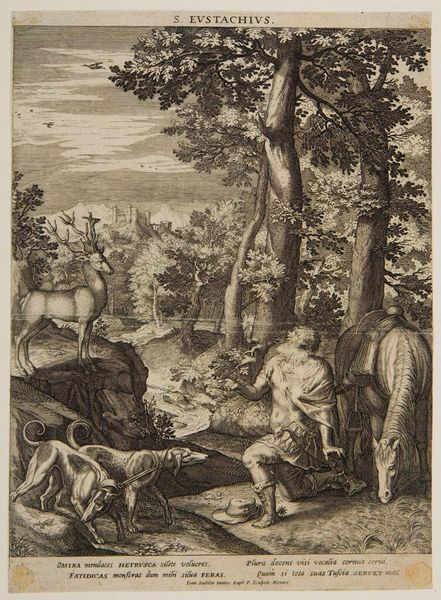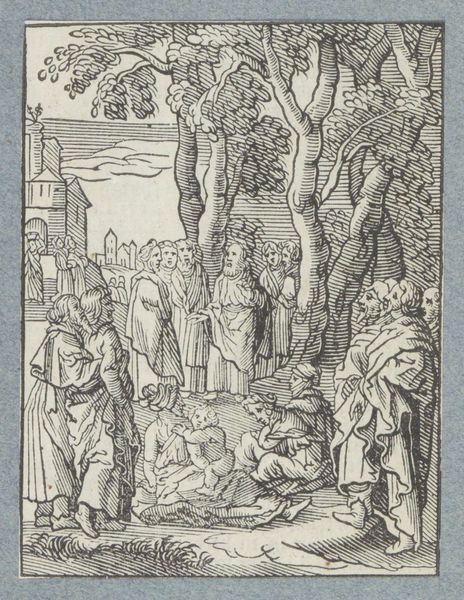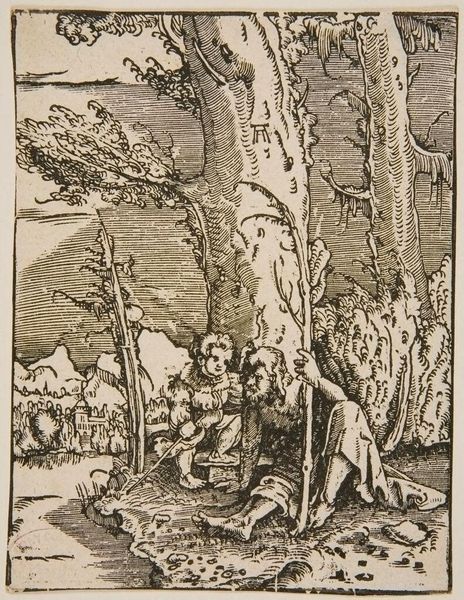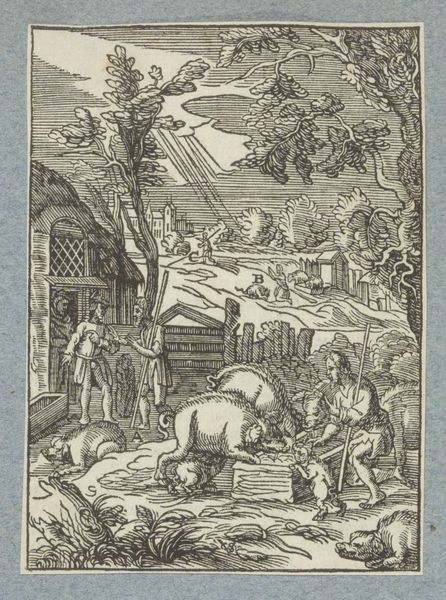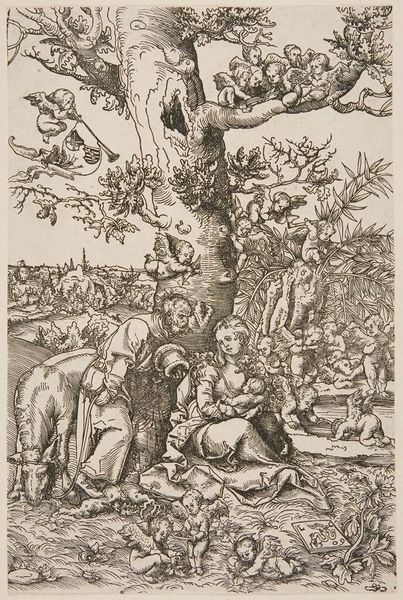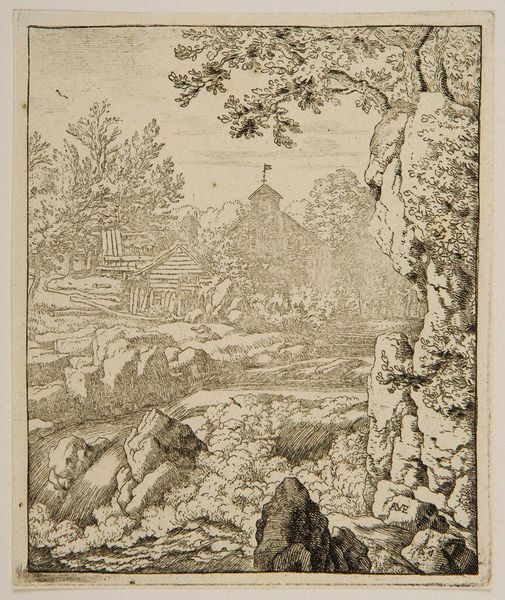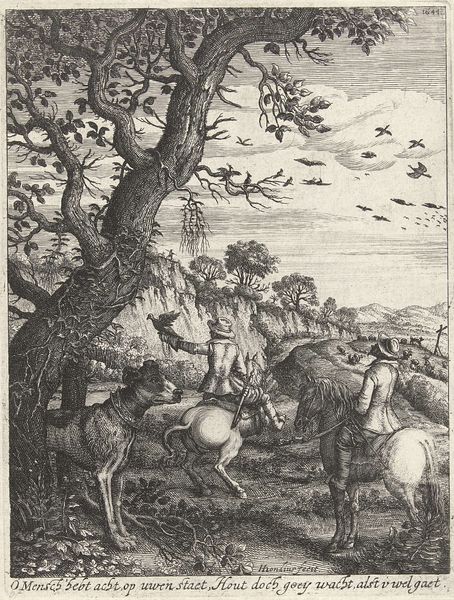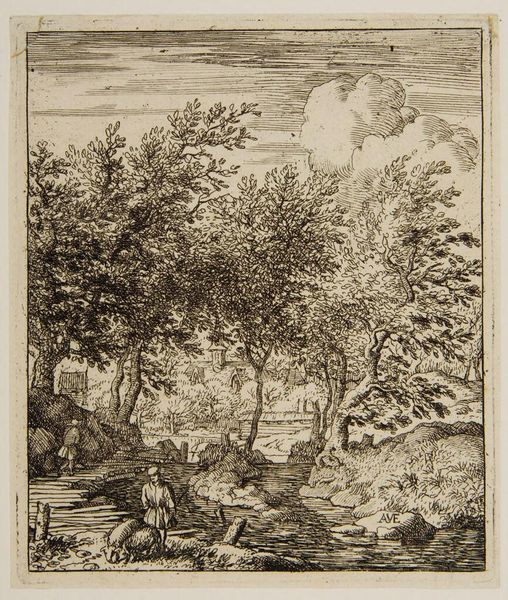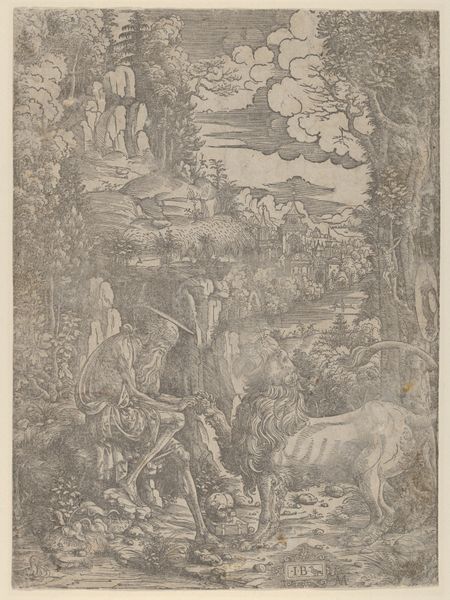
Saint Jerome c. 16th century
Copyright: CC0 1.0
Curator: This is Giovanni Battista Palumba’s "Saint Jerome," currently residing at the Harvard Art Museums. It’s a remarkable example of early 16th-century printmaking. Editor: It strikes me as a rather morbid, almost unsettling scene. The stark contrast of light and shadow amplifies the skeletal figure of Jerome and that prominent skull. Curator: Yes, Palumba’s mastery of line is evident. Notice how the density and direction create depth and texture, animating the landscape and emphasizing the saint’s contemplative isolation. Editor: And how interesting to juxtapose Jerome's scholarly pursuit with symbols of mortality. This is a powerful statement about the ephemeral nature of knowledge in the face of death, particularly during the turbulent Reformation period. Curator: Indeed, Palumba uses the composition to highlight a tension between earthly concerns and spiritual devotion, a dichotomy prevalent during this period. Editor: The lion, too, feels like a commentary on power tamed by faith. Its presence challenges conventional notions of dominance and protection. Curator: A fitting observation. This piece invites us to consider the delicate balance between form and content, each element enriching the other. Editor: I’m left pondering the artist’s own beliefs, given the context of religious and social upheaval. It's a potent intersection of the personal and the political.
Comments
No comments
Be the first to comment and join the conversation on the ultimate creative platform.



